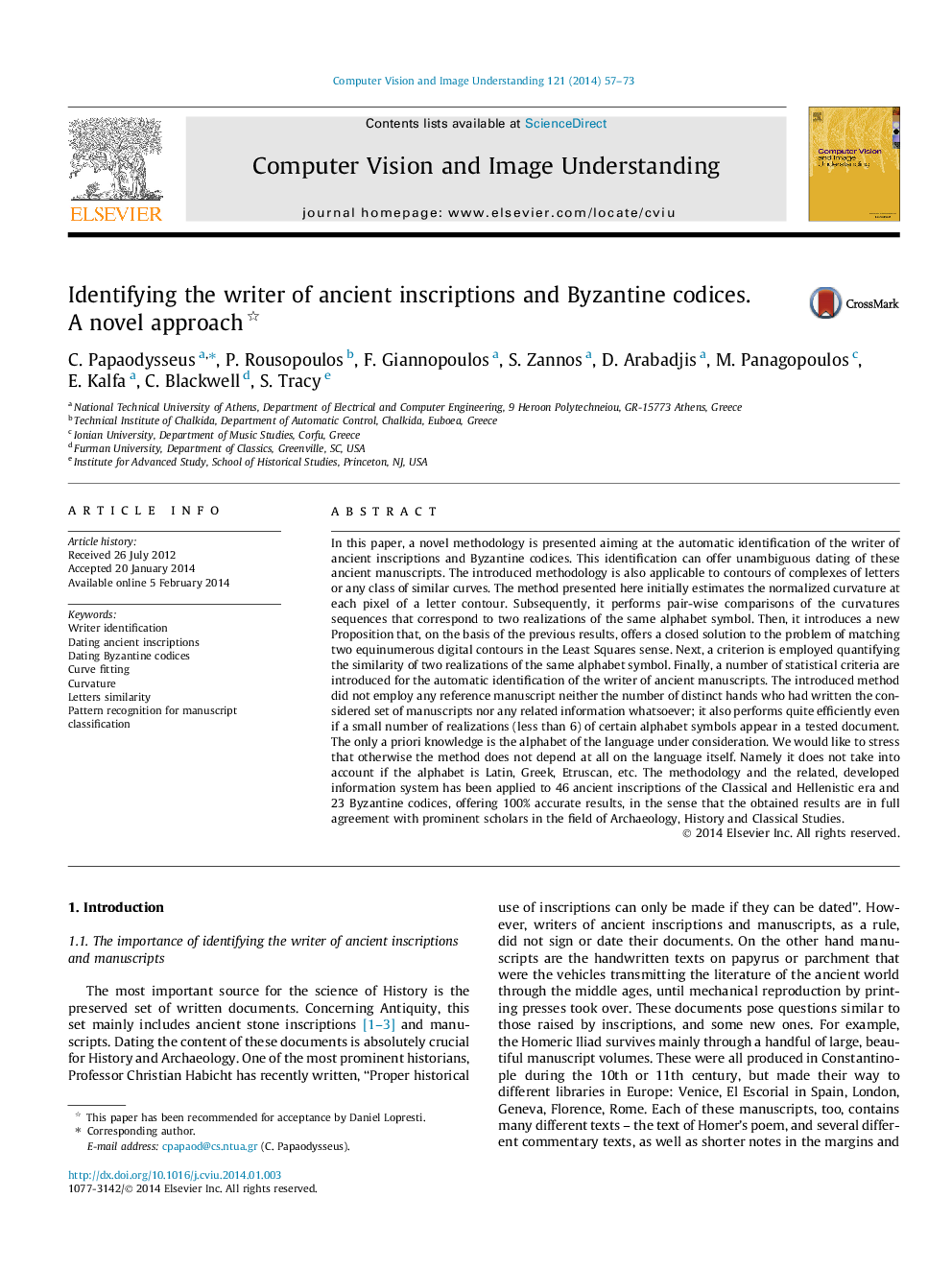| کد مقاله | کد نشریه | سال انتشار | مقاله انگلیسی | نسخه تمام متن |
|---|---|---|---|---|
| 525681 | 869011 | 2014 | 17 صفحه PDF | دانلود رایگان |
• We date ancient documents by automatically identifying their writer.
• The proposed writer identification method does not require training set or database.
• First, a new approach is introduced using the letter’s contour curvature.
• Proper statistical methods are introduced for classifying the documents per writer.
• Application to 46 ancient inscriptions and 23 Byzantine codices with full success.
In this paper, a novel methodology is presented aiming at the automatic identification of the writer of ancient inscriptions and Byzantine codices. This identification can offer unambiguous dating of these ancient manuscripts. The introduced methodology is also applicable to contours of complexes of letters or any class of similar curves. The method presented here initially estimates the normalized curvature at each pixel of a letter contour. Subsequently, it performs pair-wise comparisons of the curvatures sequences that correspond to two realizations of the same alphabet symbol. Then, it introduces a new Proposition that, on the basis of the previous results, offers a closed solution to the problem of matching two equinumerous digital contours in the Least Squares sense. Next, a criterion is employed quantifying the similarity of two realizations of the same alphabet symbol. Finally, a number of statistical criteria are introduced for the automatic identification of the writer of ancient manuscripts. The introduced method did not employ any reference manuscript neither the number of distinct hands who had written the considered set of manuscripts nor any related information whatsoever; it also performs quite efficiently even if a small number of realizations (less than 6) of certain alphabet symbols appear in a tested document. The only a priori knowledge is the alphabet of the language under consideration. We would like to stress that otherwise the method does not depend at all on the language itself. Namely it does not take into account if the alphabet is Latin, Greek, Etruscan, etc. The methodology and the related, developed information system has been applied to 46 ancient inscriptions of the Classical and Hellenistic era and 23 Byzantine codices, offering 100% accurate results, in the sense that the obtained results are in full agreement with prominent scholars in the field of Archaeology, History and Classical Studies.
Journal: Computer Vision and Image Understanding - Volume 121, April 2014, Pages 57–73
